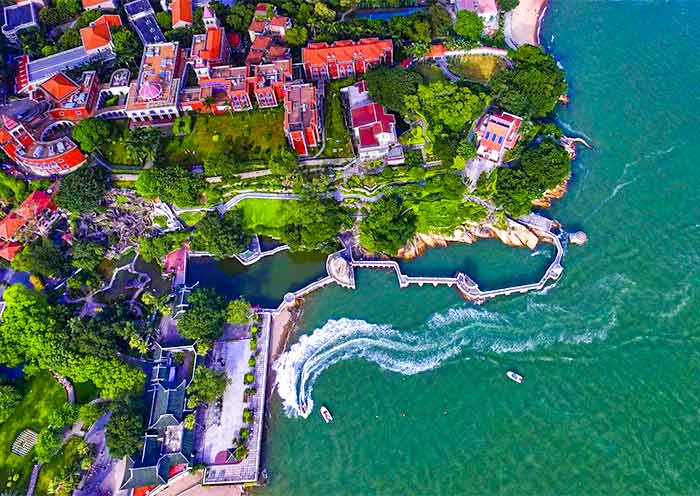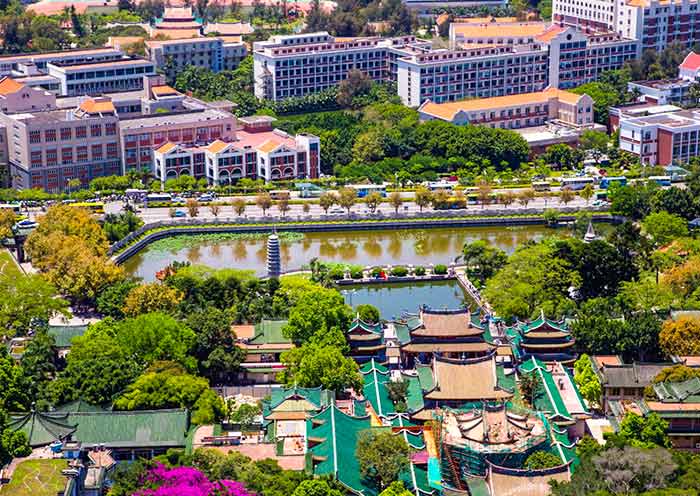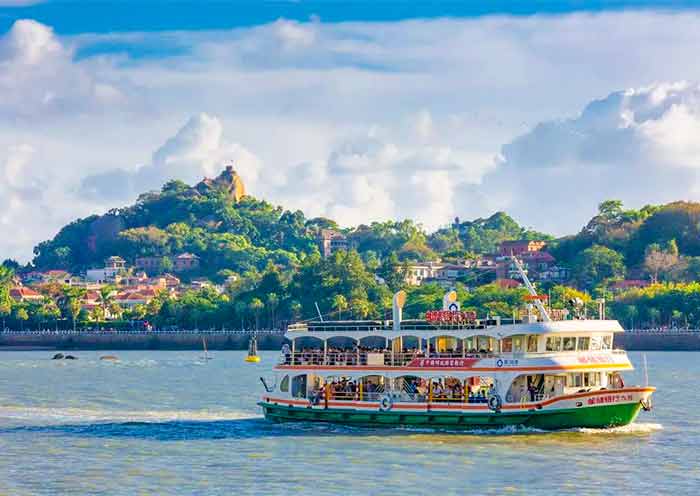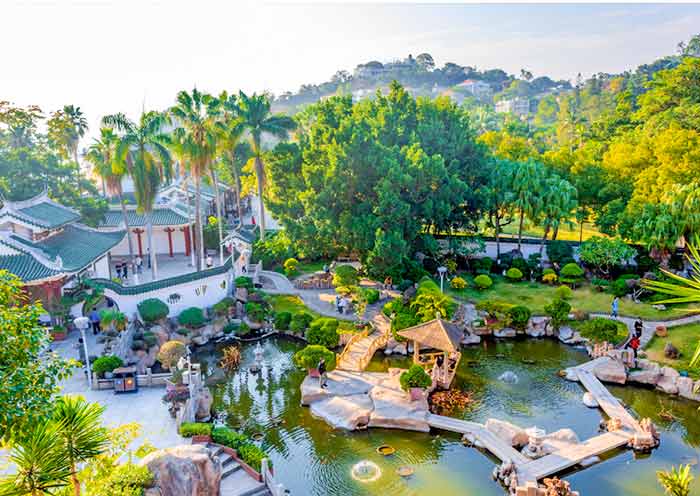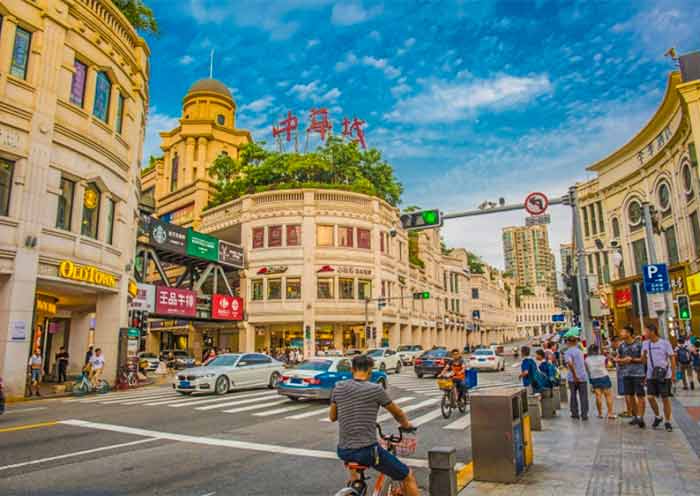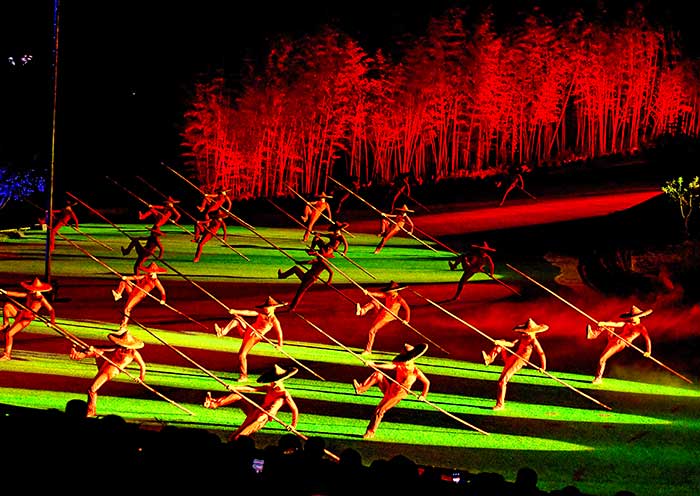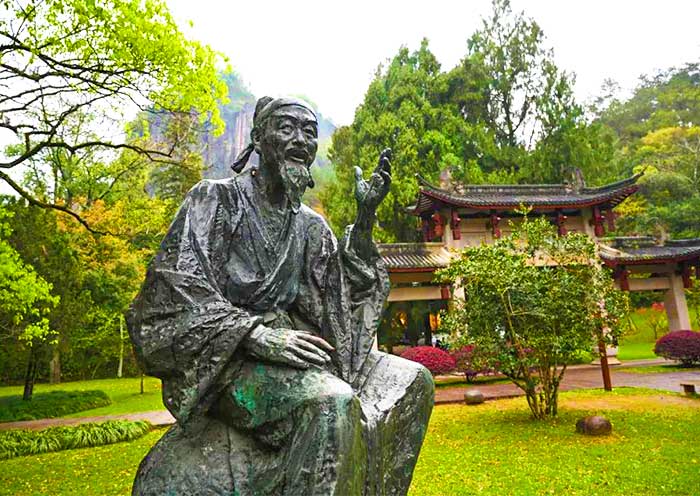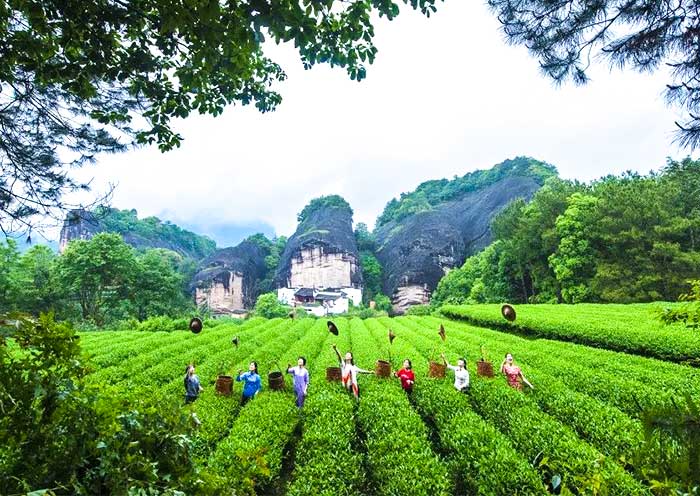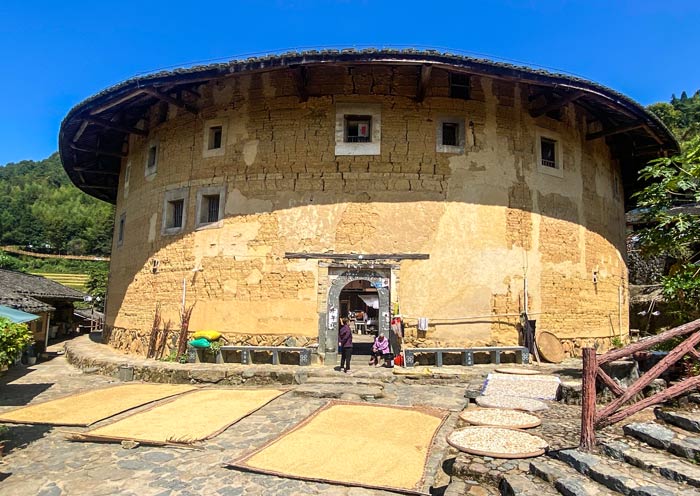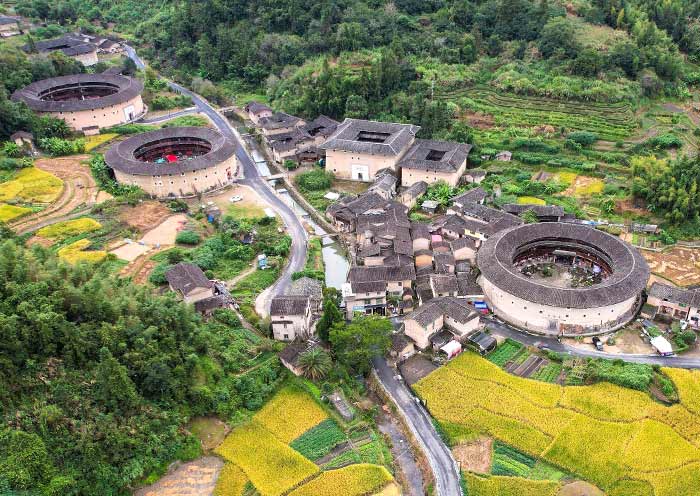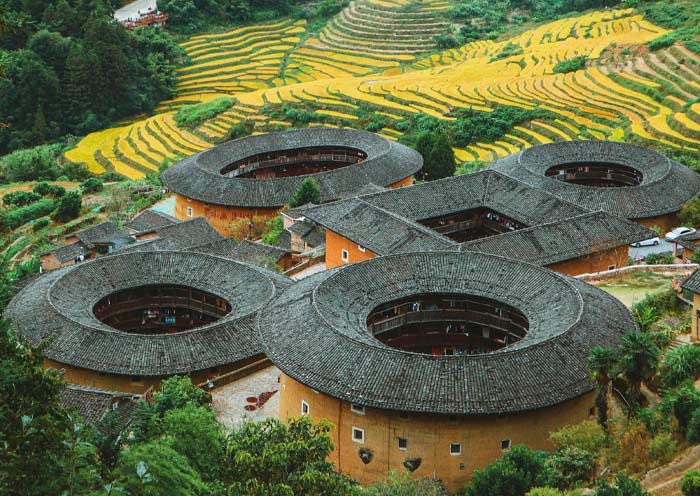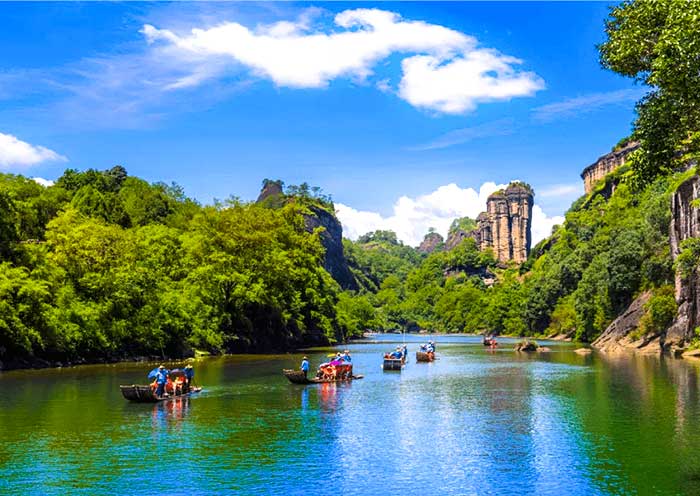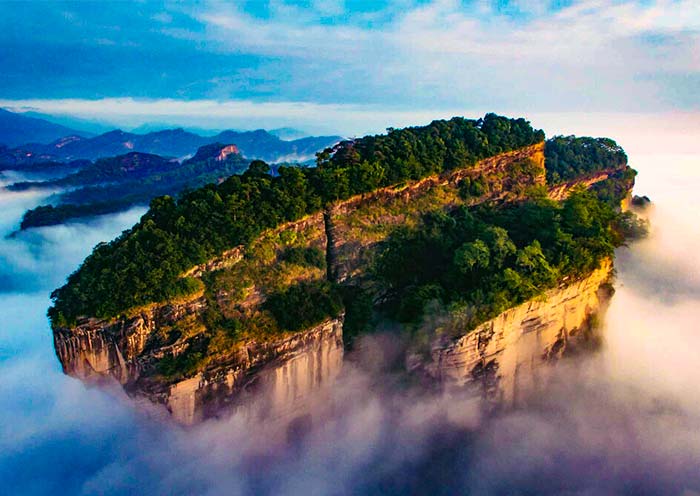Highly recommended for families seeking history and nature. The desert experience at Shapotou was unforgettable, and seeing the massive Western Xia Tombs gave us a real history lesson. The highlight was tasting the excellent wine at Xige Winery—a pleasant surprise in China's west! The tour was well-organized, and the guide and driver were exceptional, ensuring a smooth and enjoyable journey.
- Highlights
- Itinerary
- Price
- Trip Notes
- Accommodation
- Photos
- Reviews
What to explore in Fujian province? How about taking a classic itinerary to see the diverse Fujian? Take an unforgettable 5-Day Xiamen Fujian Tulou Wuyishan Tour and immerse yourself in the captivating region of Fujian. This comprehensive itinerary is designed to cover the best highlights, including three UNESCO World Heritage Sites.
Begin your adventure in Xiamen, a vibrant coastal city known for its charming architecture and picturesque landscapes. Explore the renowned Fujian Tulou, ancient earthen buildings that showcase the unique Hakka culture. Marvel at the grandeur of Wuyishan, a mountainous area with mist-clad peaks, Danxia landscape, serene tea plantations, and cascading waterfalls.
Throughout this 5-day journey, you'll witness the rich history, natural beauty, and cultural heritage that Fujian has to offer. Brace yourself for an extraordinary experience as you delve into an overall Fujian adventure that will create memories to last a lifetime.
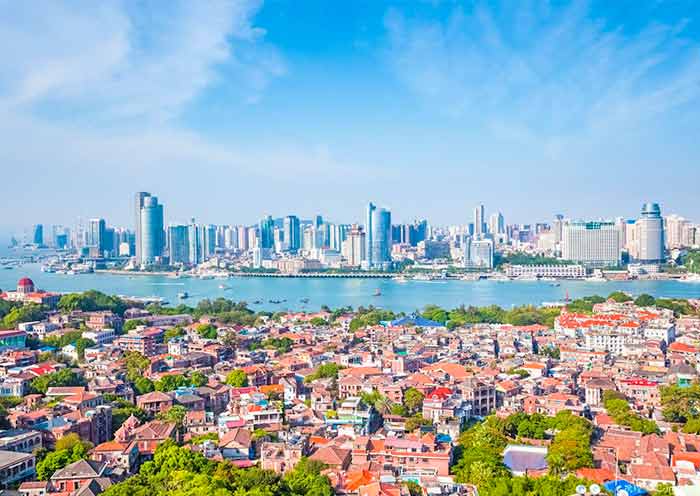
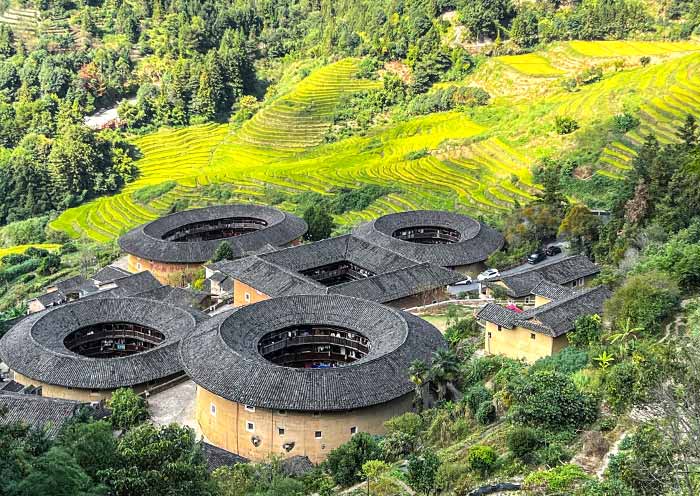
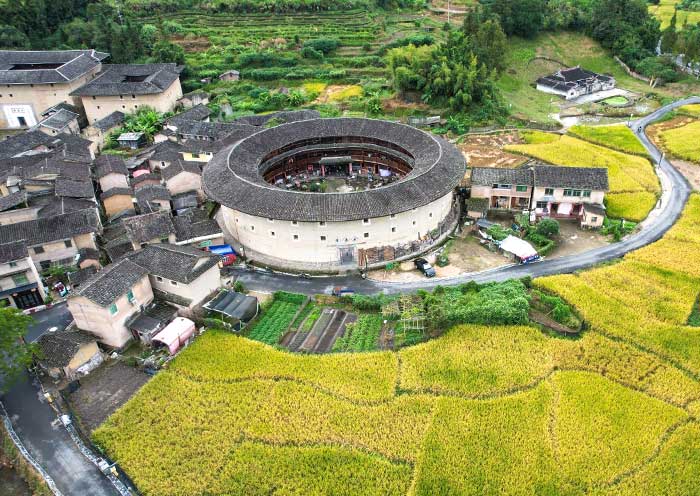
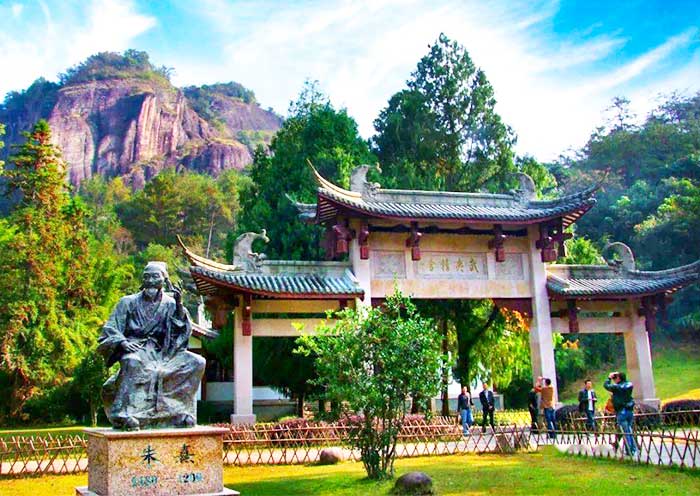
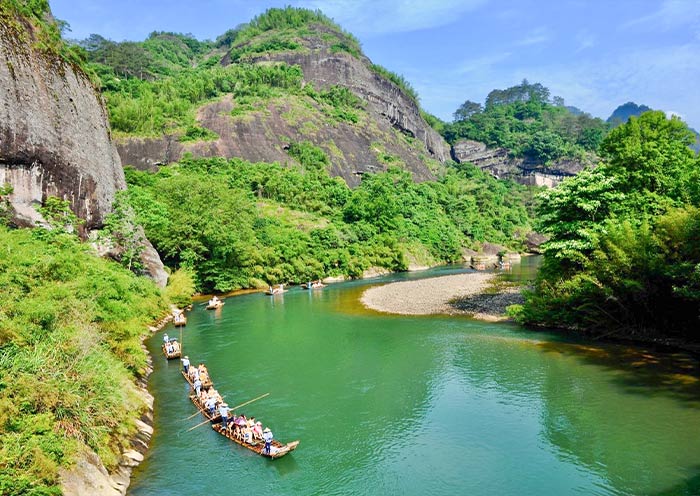
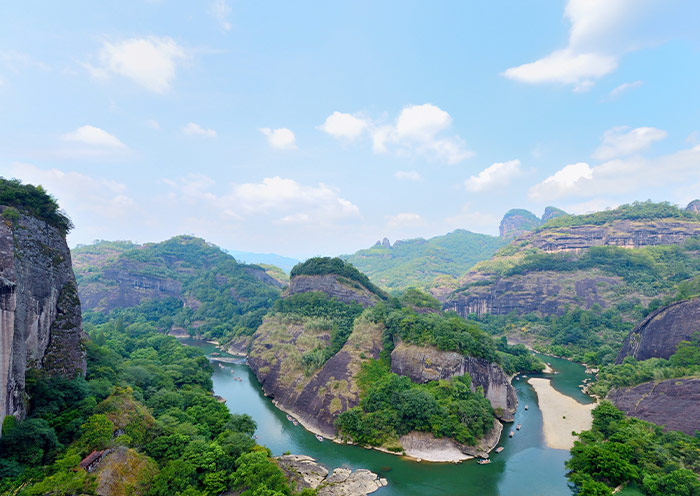
Itinerary at a Glance
Nanjing Tulou (1 Day)
Tianluokeng Tulou Cluster, Yuchang Building, Taxia Village, Hekeng Tulou Cluster
Xiamen (1.5 Day)
Gulangyu Island, South Putuo Temple, Zhongshan Road, Eighth Seafood Market, Huandao Road
Wuyishan (2.5 Days)
Tianyou Peak, Zhuxi Garden, Nine Bend Stream, Wuyi Palace, Song Street, Da Hong Pao Scenic Area, Water Curtain Cave, Xiamei Village
Itinerary Day by Day
Welcome to Xiamen, the beautiful seaside city of Fujian Province. Upon your arrival, your guide will meet you at the airport or train station's arrival hall and accompany you to your hotel in a private and comfortable vehicle. There, you will be able to check in and settle down.
Upon your arrival at the airport/train station in Xiamen, the tour guide and driver will meet and greet you at the exit, and then escort you to the well-selected hotel in downtown Xiamen for check-in. After a short rest, you will be driven to the port where you will board a 20-minute ferry to Gulangyu Island.
Gulangyu is a beautiful island off the coast of Xiamen. In 2017, Gulangyu was inscribed as a UNESCO World Heritage Site under the nomination "Historic International Settlement, over 900 historical buildings of various architectural styles, earning it the nickname "World Architecture Exhibition." Gulangyu is also referred to as the "island of music". It is famous for its outstanding musicians and musical instruments. It has more than 200 pianos - the highest per capita ownership of pianos in the entire country. Furthermore, Gulangyu is lauded as a “Garden on the Sea,” The ban on motorized vehicles contributes to the serene atmosphere of the island, making it a popular destination for those looking to unwind. It boasts beautiful scenery including sandy beaches, lush gardens, and stunning views of the surrounding waters and city skyline.
Cultural and Historical Architecture Route
Duration: 4-5 hours
Scenic Spots You will Pass:
Sanqiutian Ferry Terminal → Boat House → Bagua Building (Organ Museum) → Yang Family Mansion → Fànpó Mansion → Trinity Church → Jingua Building ( Huang Cimin Villa ) → Dafu Courtyard Mansion→ Four-courtyard Complex → Chu Family Villa → Huang Family Villa Complex → Shuzhuang Garden (Piano Museum) → Hi Heaven → Huang Rongyuan Mansion ( China Records Museum) → Cathedral Church → Get back to Sanqiutian Ferry Terminal
Brief History Introduction:
Originally, Gulangyu was a common small island in the Southern Fujian region, with architectural forms of its houses not differing from those in other parts of Southern Fujian, such as the red-brick "Four-courtyard Complex" residential buildings. However, after the Opium War in 1840, Xiamen was opened as a port. Foreign merchants, officials, and missionaries began to settle on Gulangyu Island. In less than 2 square kilometers, the island gathered 13 consulates, and a number of mansions, villas, clubs, and chapels associated with trade and commerce, transforming Gulangyu from a secluded fishing village into an international settlement. During this period, colonial-style veranda architecture became the mainstream on the island. This practical and aesthetically pleasing architectural form was also favored by the locals, gradually evolving into a Westernized and modernized architectural style.
In 1902, Gulangyu became a public settlement. With its stable public order and well-established infrastructure, many overseas Chinese gentry and scholars moved to Gulangyu and invested in real estate. Many of these overseas Chinese came from Southeast Asia, and they brought with them the Nanyang (Southeast Asian) style, integrating traditional Chinese architectural elements into European styles. It is because of this that Gulangyu has developed a unique character of Sino-Western fusion, creating a rare "World Architecture Museum."
Detailed Itinerary:
Starting from Sanqiutian Ferry Terminal(三丘田码头), you embark on a historical journey through exquisite architecture. Your first stop is the Boat House (船屋) designed by American architect John Lay. This European-style villa stands out with its creative shape, resembling a cruise ship ready to set sail. Moving on, you'll discover the Bagua Building (八卦楼), named for the eight ridges on its red domed roof and its sixteen-sided top window, set on an octagonal platform. This villa combines architectural styles from Palestine, ancient Greece, Italy, and classical China. It stands out as the tallest villa on Gulangyu Island, and its eight-ridged red dome can be easily spotted from the Xiamen ferry, making it a recognizable landmark of Gulangyu. Today, it has been transformed into China’s only organ museum. Next, you'll discover the Yang Family Mansion (杨家园), renowned as the "Versailles of Gulangyu." This complex consists of four distinctive Western-style buildings, each of which is extremely magnificent and was built by overseas Chinese from the Philippines known as the "Philippine Hardware King." They are interconnected by quaint alleys, each boasting its garden, and equipped with the most advanced water supply facilities in Gulangyu at that time. This mansion still preserves numerous rare examples of the fusion of Chinese and Western art design, including Corinthian columns, relief steel decorations, structures made of red bricks, and round and pointed arched door lintels, showcasing unique artistic charm and historical value. Your journey continues to Fan Po Mansion (番婆楼), a symbol of filial piety in the overseas Chinese community. Built out of filial piety by an overseas Chinese from the Philippines. Fan Po herself, adorned in clothes and jewelry sent by her sons, embodies the image of a wealthy woman from Nanyang. Neighbors referred to her as "Fan Po," hence the name "Fan Po Mansion." The architectural style of the mansion is an intriguing mix of Chinese elements and Rococo style, challenging the senses and showcasing an extraordinary kind of beauty. Next on the list is the Trinity Church (三一堂), a church where Chinese and Western architectural styles come together harmoniously. It was built through a collaborative effort by three local churches to provide a place for Chinese worship for the residents of the island.
Then, turn right, which takes you to the Jingua Building (金瓜楼), named after the two golden gourds on its roof, which shimmer in sunlight, the unique shape are characteristic of the Byzantine style, and the golden gourds symbolize prosperity and good fortune in the Chinese culture. The gateway of the building features a traditional Chinese hip-and-gable roof, distinguished by its double eaves and upturned corners, showcasing another exquisite example of the fusion between Chinese and Western architectural styles. Continuing your tour, you’ll visit the largest and best-preserved Southern Fujian red-brick building complex on Gulangyu Island: Four-courtyard Complex (四落大厝). This complex epitomizes the typical layout of traditional Southern Fujian architecture, featuring a front courtyard leading to the main living quarters, all aligned along a central axis. The architectural details include white stone footings paired with red brick and tiles, creating a visually striking and harmonious effect. Adjacent to this is the Dafu Courtyard Mansion (大夫第), one of the earliest and most prominent red-brick residences within the Four-courtyard Complex. The mansion once belonged to Huang Xuzhai, a distinguished fourth-grade official in the imperial court, as evidenced by the "Dafu Di" plaque adorning the residence. You'll then proceed to Chu Family Villa (褚家园), a building that represents a fusion of Minnan (Southern Fujian) and Nanyang (Southeast Asian) architectural styles. Following that, Huang Family Villa Complex (黄家花园) awaits, once celebrated as "the number one villa." This complex comprises three magnificent villas, standing as the most opulent and grandiose among all the residences on Gulangyu Island, built by overseas Chinese from Indonesia, known as the "Indonesian Sugar King." It is a high-class villa showcasing a splendid fusion of European villa elegance, aristocratic opulence, and traditional Chinese characteristics. Over the years, this villa has hosted numerous Chinese and international celebrities and political figures.
The climax of your tour is Shuzhuang Garden (菽庄花园), a garden that has perfectly translated the phrase "facing the sea, with spring flowers blossoming" into reality. The garden backs onto Sunlight Rock and faces the sea, skillfully employing the techniques of "hiding the sea (藏海)" and "compensating the mountain (补山)", becoming a classic example of Chinese garden architecture by the sea. Upon entering the garden, the sound of the waves is near, yet the sea remains out of sight until you cross a screen wall, revealing a sudden expansive view - this is the first "hiding." The true "hiding" lies in the Forty-Four Bridge, beneath which a gate channels seawater into the private garden, creating inner and outer ponds and calming the tumultuous waves. The seaside slopes and rocks are also fully utilized, with terraces built up and pavilions constructed, transforming a narrow bay into a broad, open vista. Turning left past the Forty-Four Bridge and up the hill is the Gulangyu Piano Museum, showcasing nearly a hundred precious antique pianos donated by collector Hu Youyi. Just in time for a piano performance,the resonant piano sounds, harmonizing with the waves outside, encapsulate the unique charm of Piano Island. Then passing through Tianwei Road and taking a right turn onto Zhonghua Road to continue walking, you will arrive at Hi Heaven (海天堂构), the only villa complex on Gulangyu Island that is arranged symmetrically along a central axis. The design masterfully incorporates both Chinese and Western cultural elements, with Chinese-style roofs atop Western-style buildings. Adjacent to the tower is Huang Rongyuan Mansion (黄荣远堂), whose architecture and gardens are extremely aesthetic and characteristic, epitomizing the fusion of Western, Southeast Asian, ancient Chinese, and modern styles. It is renowned as the “most romantic villa” on Gulangyu Island and has served as the filming location for many film and television productions. Nowadays, it has been transformed into the China Record Museum, which houses a collection of precious vinyl records. Wandering back towards the ferry terminal, you’ll pass several consulates and churches, such as the Catholic Church (天主教堂) - , the Union Church (协和教堂) , the Japanese Consulate (日本领事馆), and the British Consulate (英国领事馆), etc. Each of these buildings has a unique architectural style and its own story to tell. (Tips: Wear comfortable shoes as there will be a lot of walking involved.)

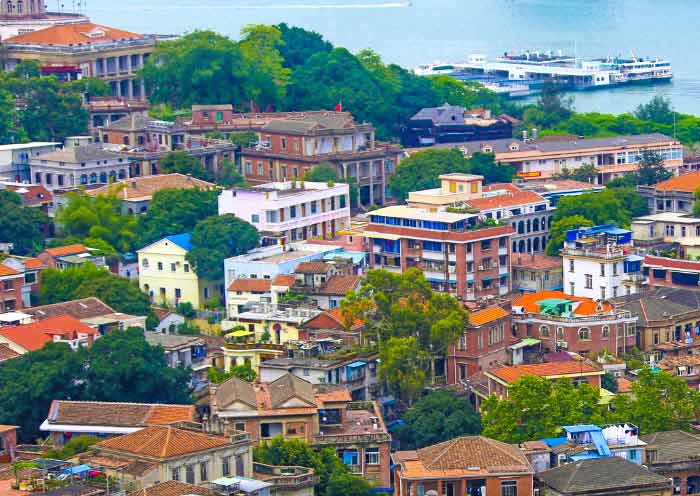
This morning, head to Nanjing Tulou (南靖土楼) from Xiamen City (150km, 2.5 hours drive). You will enjoy a full-day guided tour with us to witness the amazing Fujian Hakka Tulou (world Heritage), the masterpiece of traditional Chinese residential buildings built by the Hakka people. You will have fun exploring the Tianluokeng Tulou Cluster, which was mistakenly identified as a “missile weapon base” by America. Have a bite of Hakka food and learn more about Hakka culture by visiting Yuchang Building and Taxia Village. Additionally, you can try to discover Mulan's hometown (花木兰的家) as depicted in the Disney movie at the Hekeng Tulou Cluster if time permits.
When arrive at Tianluokeng Tulou Cluster(田螺坑土楼群), you will fall in love with the 5 “unique and mythical mountain architectures” surrounded by rice terrace fields, tea bushes, and fruit trees like persimmon. There are over 15,000 Nanjing Tulou buildings, and the Tianluokeng Tulou Cluster is a must-visit with its 5 iconic Hakka Tulou buildings, locally referred to as the "Four Dishes and One Soup" (四菜一汤). It consists of one square Tulou (Buyun Building步云楼; the most common shape among Tulou), one oval Tulou (Wenchang Building文昌楼; the only oval-shaped Tulou in China), and three round Tulou buildings (Hechang Building和昌楼, Zhenchang Building振昌楼, and Ruiyun Building瑞云楼). The round Tulou and square Tulou also represent the Eastern philosophy of "Heaven is round, Earth is square" (天圆地方), the balance of Yin and Yang, as well as the complementary nature of movement and stillness, which depicts the ancient Chinese scientific cognition of the universe. From the upper observation deck (上观景台), you can overlook the Tulou cluster resembling blossoming plum flowers scattered in front of the rice terrace fields, symbolizing the auspicious meaning of "Five Blessings through Plum Blossom Opening" (梅开五福). According to Chinese Fengshui (风水), the arrangement of the five Tulou buildings follows the Five Elements (五行Metal, Wood, Water, Fire, Earth) layout. According to this layout, the four round Tulou buildings—Wenchang Building, Hechang Building, Zhenchang Building, and Ruiyun Building—correspond to the elements of Metal (金), Wood (木), Water (水), and Fire (火), respectively. The central square Tulou, the Buyun Building, corresponds to the Earth (土) element. According to ancient Chinese philosophy, the elements of Fire, Wood, Earth, Metal, and Water represent the blessings of Fortune, Prosperity, Longevity, Happiness, and Wealth (福、禄、寿、喜、财), respectively. The five Tulou buildings mean the fulfillment of these five blessings (五福), representing the Hakka people’s wish for happiness and good fortune. From the lower observation deck (下观景台), you can admire the Tulou Cluster resembling a Fujian version of the "Potala Palace" that stands at the top of the rice terrace fields.
The Tianluokeng Tulou Cluster, initially built in 1662, is now the settlement of around 700 members of the Huang family (Hakka people). All five Tulou buildings face northeast and are oriented southwest. You can explore the first Tulou built in Tianluokeng the "Buyun Building" (步云楼), symbolizing the hope that future generations will excel in education and succeed in their careers. Then visit the subsequent buildings including the "Hechang Building" (和昌楼) representing harmony and prosperity, the "Zhenchang Building" (振昌楼) representing progress and prosperity, the "Wenchang Building" (文昌楼) symbolizing cultural prosperity, and the "Ruiyun Building" (瑞云楼) with auspicious and wealthy connotations. When enter Tulou buildings, you will see each vertical household within the Tulou accommodates one family, with the ground floor serving as the kitchen, the second floor as a granary, and the third floor as bedrooms. There are also shared halls, wells, and courtyards in the central area. The windows on the third floor provide ventilation and natural light, but can also serve as shooting holes in emergencies. Tulou buildings originated during the Song and Yuan dynasties (over 1,700 years ago) and flourished during the late Ming, Qing, and Republic of China periods. The ancestors of the Hakka people came from the Central Plains (中原Henan province) and migrated south to escape wars. They settled in this rugged, wildlife-infested, and bandit-prone area, living in close-knit communities (Hakka Tulou) for self-preservation. Since they were guests from distant lands, they became known as "Hakka people" (客家人).
At lunchtime, you can have a Tulou Hakka family visit to enjoy delicious Hakka food and experience the local Hakka people's lifestyle. Don’t forget to try Hakka rice wine.
After lunch, head to Xiaban Village (下板村), a flat land carved out of the surrounding mountains, where the streams flow joyfully and tea gardens cascade in layers. Twelve Tulou buildings are scattered in an orderly manner on both sides of the streams. You will visit the most renowned Tulou here, the Yuchang Building (裕昌楼). Known as the "Father of Fujian Tulou" (福建土楼之父) and the oldest existing Tulou, the Yuchang Building is hailed as the Tulou version of "Leaning Tower of Pisa" (比萨斜塔), with a maximum tilt of 15°. Completed in 1308, the Yuchang Building was finished several decades earlier than the Leaning Tower of Pisa in Italy (completed in 1372). From the outside, the Yuchang Building's exterior walls are weathered and mottled, resembling an elderly figure who has weathered storms. You will discover that the Tulou is enclosed by outer walls measuring 1-2 meters thick and load-bearing inner walls around 50 centimeters thick. Made primarily of raw earth, it is mixed with lime, fine sand, glutinous rice, brown sugar, bamboo chips, and wooden strips. Through repeated pounding and compacting, the Tulou is constructed, featuring characteristics such as communal living, theft prevention, earthquake resistance, animal deterrents, fire resistance, moisture resistance, ventilation, and natural lighting, ensuring warmth in winter and coolness in summer. Stepping into the Yuchang Building, you will be startled at why it is called the "East Leaning West Tilted Building" (东歪西斜楼). Although the pillars of the third and fourth-floor corridors lean clockwise, while the pillars of the fifth-floor corridor lean counterclockwise, giving it an appearance of being on the verge of collapse, it has endured countless storms over seven hundred years, as well as multiple earthquakes, and remains intact. According to legend, during the construction of the building, the artisans were angered by the lack of care given to them, so they intentionally constructed it this way.
The Yuchang Building is a round Tulou which is not only a product of early joint-stock ownership but also a vivid demonstration of the special sentiment and application of Feng Shui and the number "five" in ancient Chinese architecture. Yuchang Building was jointly funded and constructed by five clans: Liu, Luo, Zhang, Tang, and Fan. The five clans divided the building into five sections based on their required rooms, with five sets of staircases and five observation decks on the outer walls. This design embodies the philosophical concept of the mutual generation of the five elements in Tulou architecture, promoting harmonious living, and also represents the aspiration for abundant harvests and good fortune. Perhaps because ancient Chinese people often used "five" for counting (with five fingers on each hand and foot) and considered it the largest and auspicious number. Yuchang Building has five floors: the first floor is the kitchen, the second floor is the granary, the third floor is for the elderly, the fourth floor is for the young, and the fifth floor is used for storing coffins. Interestingly, Yuchang Building has the most wells among Fujian Tulou buildings (22 wells). Each kitchen has its own well, allowing easy access to water by simply using a dipper. In the central courtyard of the building, there is a single-story circular ancestral hall. In front of the hall, there is a Yin-Yang Bagua pattern paved with cobblestones, divided into five sections representing the five elements: metal, wood, water, fire, and earth. The building consists of a total of 269 rooms. At its peak, it housed over 40 households with more than 360 people. Currently, there are 24 households with the surname Liu, totaling 123 residents. The Hakka people will invite you to their rooms, have a look at their well, and have a drink of Oolong tea made by the locals while learning more stories and folk culture in Tulou from the owner of the Hakka Castle.
In the afternoon, move to Taxia Village (塔下村), a Hakka village famous as Zhouzhuang Water Town in southern Fujian (闽南周庄). With its small bridge, flowing water, and peaceful houses, Tiaxia Village is a village with a history of over 400 years that resembles a secluded paradise. It is not only a renowned overseas Chinese village in Fujian Province but also a famous longevity village. A mountain stream, approximately 1 km long, meanders through the gorge. There are 11 stone arch bridges of various styles on the stream, and along the banks, there are 42 earthen buildings. If you climb to the observation deck on the small hilltop, you will be rewarded with a panoramic view of the "Taiji water village". Due to the river forming an S shape, on both sides of the river, centered around two circular Tulou buildings—Yude Building and Shunchang Building—numerous Tulou and charming small brick houses are scattered, making the entire village resemble a Taiji diagram. You can visit the Yude Building by the stream. From the outside, it appears as a complete Tulou, but inside, only half of it is built. The front half-circle has one more floor than the back, resembling a kitchen apron, hence its nickname, "Apron Building" (围裙楼). This Tulou suffered a devastating fire, with evident bullet holes and burn marks on the broken walls. It was later restored by the overseas Chinese. Don't miss De Yuan Tang (德远堂Zhang Clan Ancestral Hall张氏宗祠). According to records, in 1426, the Zhang ancestors settled here, forming a typical Hakka village. In front of the ancestral hall, there is a semicircular pond, and along the pond, 24 stone dragon flagpoles stand tall, reaching up to 10 meters. Only villagers who achieved great accomplishments or centenarians are qualified to have a dragon pillar erected, representing the pride of the clan.
If there is still time, you can also visit the Hekeng Tulou Cluster (河坑土楼群) to find Mulan's hometown as depicted in the Disney movie. It follows the planning and layout concept of "Harmony between Heaven and Earth" and is concentrated within an area of less than 1 square kilometer. It consists of 14 large-scale Tulou buildings (13 of which are listed as World Heritage Sites), making it the most densely populated Tulou cluster in Fujian. From the earliest Chaoshui Building (朝水楼; built in 1549) to the latest Yongqing Building (永庆楼; built-in 1972), the construction period spans a remarkable 423 years, reflecting the historical evolution of Tulou formation and development in different eras. The cluster comprises 7 square-shaped Tulou buildings from the Ming and Qing dynasties and 7 round-shaped Tulou buildings built in modern times, forming a spectacular celestial phenomenon resembling the "Big Dipper" (北斗七星) constellation on the ground. The harmonious coexistence of these two groups, the combination of square and round, Ying and Yang, creates a unique landscape that is unparalleled within the Tulou complexes. You can climb the observation deck on the southwest side of Shizi Mountain (Lion Hill) at the entrance of Hekeng Village to capture the panoramic view of the Hekeng Tulou Cluster, a representative museum of Fujian Tulou clusters and a masterpiece of traditional Chinese residential architecture.
Notes:
1. Visit Tianluokeng Tulou Cluster, you can either hike or take a shuttle bus.
2. Hekeng Tulou Cluster, you will be dropped off at the entrance and will then need to walk for about 15 minutes to reach the main earthen buildings.
After the tour, it is time to escort you back to your hotel in Xiamen.
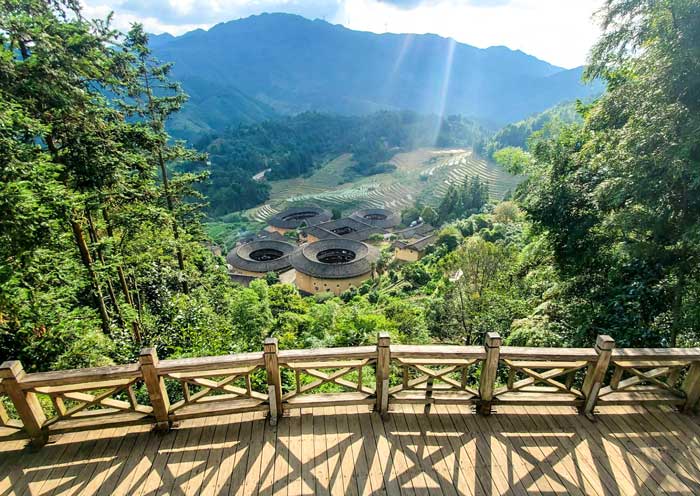
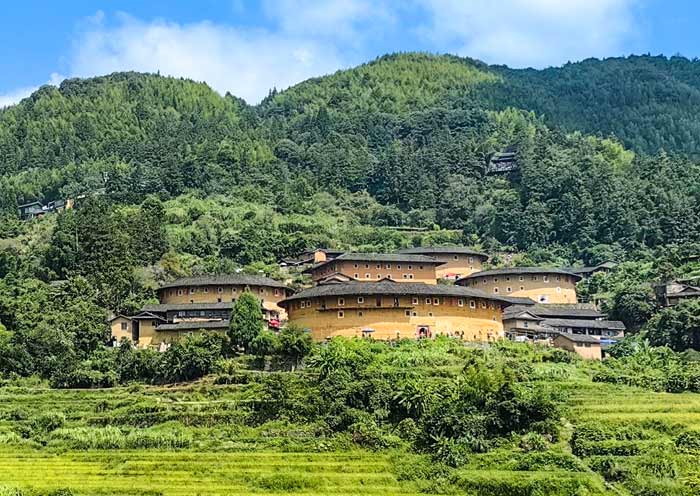
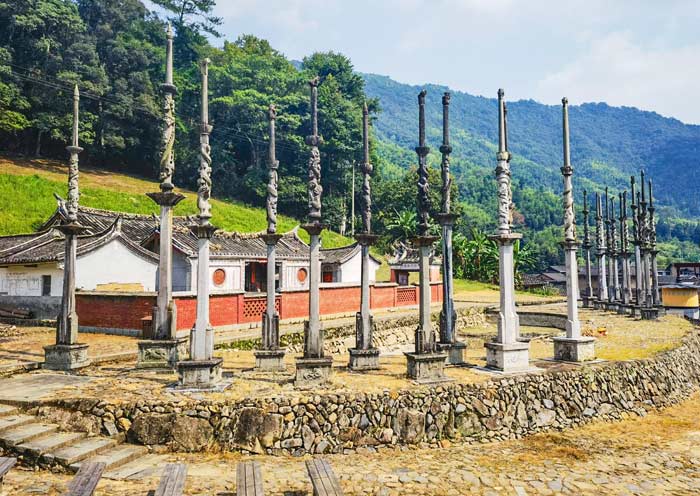
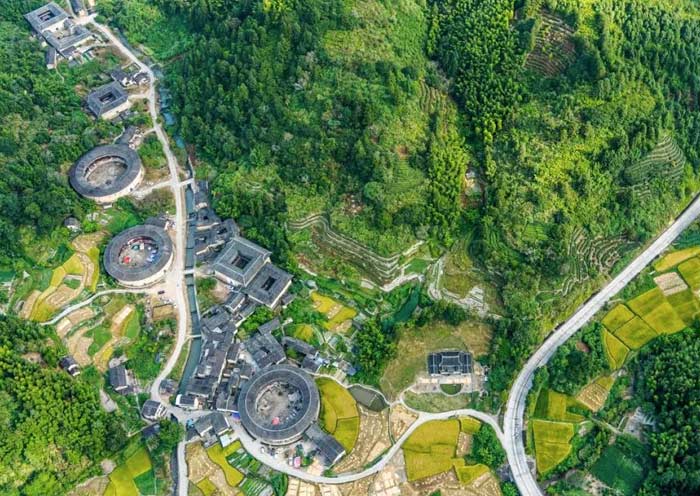
In the morning, start your day with a peaceful visit to South Putuo Temple (南普陀寺), known as Nanputuo Temple, one of the most famous temples in Fujian and be considered a pilgrimage site by dedicated followers from Southeast Asia. With a history dating back a thousand years, the temple was originally built in the late Tang Dynasty and was called Sizhou Temple (泗洲寺). During the reign of Emperor Kangxi of the Qing Dynasty, Shi Lang recovered Taiwan and was stationed in Xiamen. He built the Great Mercy Hall here to worship Guanyin, then changed the name of the temple to Nanputuo, which matches the Guanyin Dojo on Putuo Mountain in Zhejiang province. Over repeatedly rebuilt and renovated, today, it’s still an active and bustling temple with chanting monks and worshippers lighting incense.
Upon entering through the mountain gate, you are greeted by a wide expanse of lotus ponds and release pools, where many locals come to relax. The main buildings of the temple, including the Tianwang Hall (天王殿), Daxiong Baodian (大雄宝殿), Dabei Hall (大悲殿), and the Depository of Buddhist Sutras (藏经阁), are arranged along the central axis, each progressively elevated following the terrain. The buildings feature double eaves and flying ridges, topped with apricot-yellow glazed tiles, which stand out against the lush, towering ancient trees, creating a grand and imposing atmosphere. Don't miss a visit to Dabei Hall, the main hall of the temple, which houses a magnificent statue of Guanyin with a thousand arms and eyes, symbolizing her omnipresent mercy. In the Depository of Buddhist Sutras, you can see various precious Buddhist relics. Nanputuo Temple is also renowned for its vegetarian meals, so if you enjoy vegetarian food, consider dining here or choose some sweet Nanputuo vegetarian cakes as souvenirs.
Later, you can enjoy the feeling of old Xiamen by strolling on Zhongshan Pedestrian Street. Zhongshan Road is the only walking street in China that leads directly to the sea and is also one of the earliest developed commercial areas in Xiamen. Today, the 1.1-kilometer-long Zhongshan Road remains the busiest commercial street in Xiamen. A major highlight of Zhongshan Road is the array of historic Qilou buildings (or arcade-houses) lining the street, constructed by returning overseas Chinese in the 1920s. These Qilou buildings featuring a South-East Asian style, are adorned with delicate Western-style carvings, Chinese engravings are seamlessly integrated with Greek column heads, showcasing a harmonious blend of Eastern and Western architectural elements. While shopping and savoring delicious food, you can also appreciate the unique artistic and historical value of these buildings, experiencing the profound cultural heritage of Xiamen.
Alternatively, you can turn into the small alleys near Zhongshan Road to explore the local life of Xiamen. These alleyways are filled with the ancient charm of the Southern Fujian, offering a plethora of colorful Minnan snacks and authentic old-brand restaurants. I recommend trying the Shacha Noodles (沙茶面) and Oyster Omelette (蚵仔煎). Seafood is also a major highlight of Xiamen's cuisine. You can visit the nearby Eighth Market, which is the most famous seafood market in the locality. There, you can explore a wide variety of fresh seafood and perhaps even try some local seafood dishes. (Tips: If you decide to dine at the Eighth Seafood Market, be sure to negotiate the price before you purchase any seafood to avoid any misunderstandings.)
After that, indulge in a tranquil drive along Huandao Road (Islet-Ring Road). Huandao Road is a scenic coastal road in Xiamen, renowned for its beautiful views of the sea, beaches, and lush greenery. Along this road, you can enjoy unparalleled glimpses of the stunning coastline and expansive sea. When passing by various parks and beaches like Yefeng Village and Baicheng Beach, feel free to pull over and take a moment to fully absorb the charm of the island. Take a leisurely stroll along the sandy shores, allowing the soft grains of sand to caress your feet. Immerse yourself in the soothing sea breeze and palm grove, and savor the pleasant seascape that surrounds you.
In this afternoon, be escorted to the train station in Xiamen for a high speed train to Wuyishan (about 2.5-3 hours). Welcome to Wuyishan (武夷山)! Upon your arrival, your guide will meet you at the train station and accompany you to your hotel in a private and comfortable vehicle. There, you will be able to check in and settle down.
Wuyishan Mountain, renowned as Mount Wuyi, is a UNESCO World Heritage Site of Natural and Cultural Wonders located in the northern part of Fujian Province. It boasts a unique Danxia landform and is considered the most complete and typical among over 260 Danxia landforms in China, earning it the reputation of "green waters and red mountains". Wuyishan Mountain is also known as a famous mountain associated with the three teachings (Taoism, Buddhism, and Confucianism). It serves as a major center for tea production, particularly for the world-famous Dahongpao (Big Red Robe) tea, which is grown on the steep cliffs at the heart of the Wuyishan Scenic Area. Wuyishan Mountain is the birthplace of renowned oolong tea and black tea, with Dahongpao being the representative variety of Wuyishan's rock tea and best known for its mother tree, which holds iconic status.
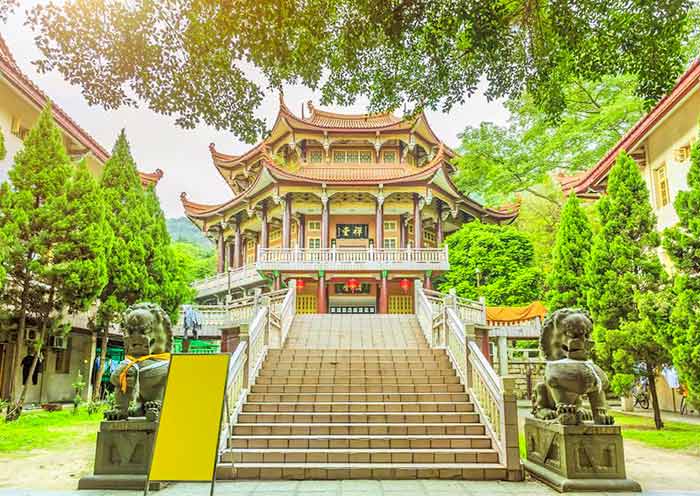
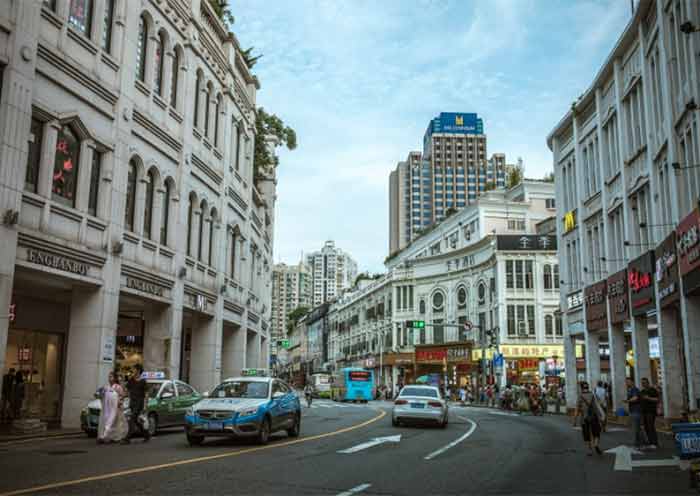
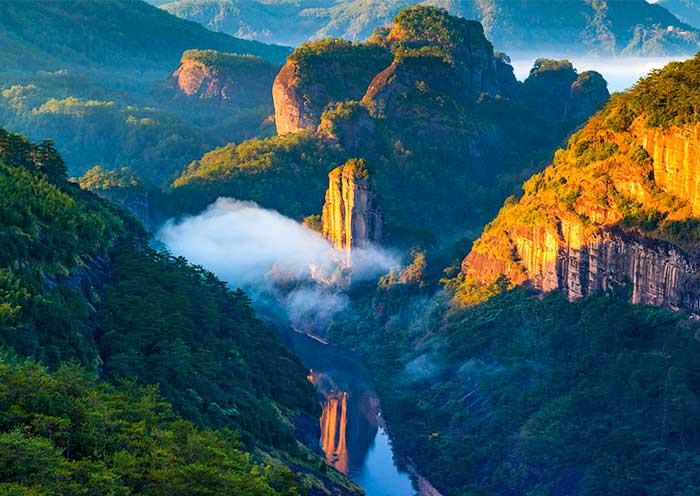
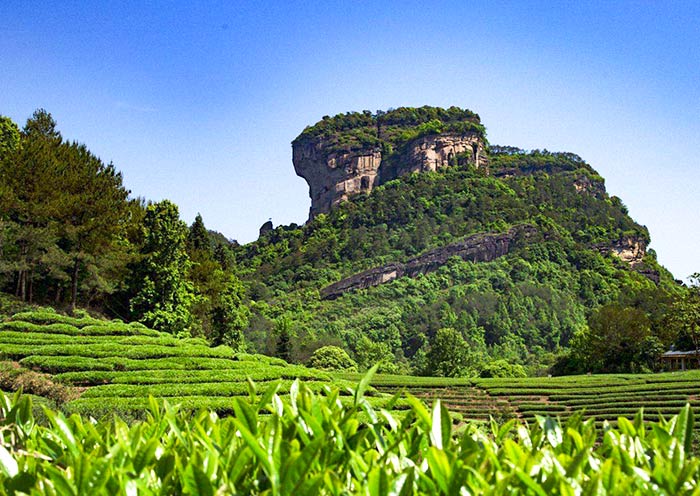
On this day, you will spend a full day exploring the essence of Mount Wuyi. First, take a sightseeing bus to the foot of Tianyou Peak, also known as Heavenly Tour Peak (天游峰), one of Wuyishan's most renowned and beloved attractions. To reach the summit of Tianyou Peak, you will need to hike up a steep staircase consisting of over 800 steps. However, the effort is well worth it, as the summit offers awe-inspiring panoramic views. As the saying goes, "Not ascending to the summit is as good as not visiting". Once you reach the peak, lean against the railing and behold the breathtaking scenery that unfolds before your eyes. The vast expanse of clouds, the majestic suspended peaks, the meandering bends, and the gentle swaying of bamboo rafts create a captivating visual spectacle. The landscapes of Wuyishan Mountain, with its mountains and waters, are fully displayed, providing a feast for the senses. As you gaze upon the ever-changing and unpredictable sea of clouds, you will be immersed in a world of wonder and beauty.
Wuyishan Mountain holds the significant role of being the birthplace of Zhu Xi's Neo-Confucianism (朱子理学) and serves as a revered destination for the study of Zhu Xi's philosophy and Eastern culture on a global scale. After taking in the breathtaking panoramic view of the Danxia landform in Wuyishan, your journey continues with a captivating exploration of its cultural treasures. Pay a visit to Zhuxi Garden (朱熹园), also known as Wuyi Jing She (武夷精舍), the very sites where Zhu Xi delivered his lectures. Here, you can delve into Zhu Xi's life, gain a deeper understanding of the formation and dissemination of his Neo-Confucianism, and immerse yourself in the rich cultural ambiance that embodies Zhu Xi's philosophy. Zhu Xi (朱熹), also known by the honorific Zhuzi, was a philosopher, thinker, and educator during the Southern Song Dynasty (1127-1279). The city of Nanping, where Wuyishan is located, holds immense historical significance as the birthplace, development hub, and culmination of Zhu Xi's Neo-Confucianism. Zhu Xi's contributions elevated the people-oriented Confucianism to new heights. When you step into Zhu Xi Garden, it feels akin to entering a memorial hall dedicated to the renowned Neo-Confucian philosopher of the Southern Song Dynasty. Through the use of informative texts, captivating imagery, and valuable artifacts, the memorial hall provides a comprehensive account of Zhu Xi's life. It highlights his extraordinary journey, from his early education in Wuyishan to his scholarly writings during his middle age, and his establishment of educational institutions in his later years, ultimately cementing his legacy as a great Confucian scholar. Through the visual portrayal and textual descriptions, you can witness the far-reaching impact of Zhu Xi's teachings, transcending time and space.
In the afternoon, head to the pier for a bamboo rafting ride down the Nine Bend Stream (九曲溪) to meander through the waters of Wuyishan and appreciate the picturesque beauty akin to a painting-like stroll. Jiuquxi, originating from the core nature reserve of Wuyishan National Park, is the most beautiful stream in China. It stretches for 9.5 kilometers and is renowned for its nine bends and eighteen bays, allowing visitors to experience the essence of natural heritage in this area. As the raft glides through the water, you can admire towering sandstone cliffs, lush green forests, and cascading waterfalls. You may also have the opportunity to spot local wildlife, such as monkeys, squirrels, and birds. The flowing water gracefully curves nine times, revealing unique and picturesque landscapes at each turn. Embarking on a journey from the beginning of the "Nine Curves" and following the stream to the "One Curve", you will be treated to breathtaking views of the azure sky, fluffy white clouds, crystal-clear water, majestic red mountains, and lush green trees. Along the way, immerse yourself in the ancient love legends of Dawang Peak (大王峰) and Yunv Peak (玉女峰), and explore, appreciate, and capture real-life settings that depict famous scenes from the classic novel "Journey to the West". Additionally, from a distance, you can witness the marvelously preserved remnants of hanging coffins on the steep cliffs of both riverbanks. Allow yourself to be captivated by the beauty of the mountain scenery, delight in the vibrant hues of the water, and experience the enchanting allure of this heavenly landscape. The entire experience will last approximately 1.5 hours.
Wuyishan is also a famous mountain for the three religions (三教合一). Since the Qin and Han dynasties, Wuyishan has been a dwelling place for Buddhist, Taoist, and Confucian scholars, leaving behind numerous sites of palaces, Taoist temples, and Buddhist shrines. With a history of over 1000 years, Wuyi Palace (武夷宫), located at the end of the bamboo rafting journey along the Nine Bend Stream, is also known as Huixian Temple, Chongyou Temple, and Wannian Palace. From the reign of Emperor Huizong to Emperor Ningzong during the Jiading period, a total of 25 famous figures served at Chongyou Temple in Wuyishan. Most of these individuals were renowned Confucian scholars of their time, known for their upright character, integrity, and moral writings that were admired by future generations. As a result, this ancient palace became an important place for the dissemination of Neo-Confucianism. Zhu Xi deeply admired these scholars, and he aspired to emulate their elegant and refined spirit. Zhu Xi found great value in further studying Zhou Dunyi's "Diagram of the Supreme Ultimate" (太极图说). Within the temple grounds, there are two ancient cinnamon trees, one of which was planted by Master Zhu Xi himself. When the flowers bloom, the entire garden is adorned with splendor, and the fragrance of cinnamon fills the air. Zhu Xi and his friends have also left many cliffside stone carvings along the banks of the Nine Bend Stream.
Your next visit will be Song Street (宋街), close to Wuyi Palace. The street spans approximately 300 meters, where traditional intangible cultural heritage and modern specialty food come together harmoniously. It is a vibrant street with a mix of refined and classical tea houses, lively bars, and establishments that showcase the dignity and grandeur of the Chunqiu Hall, the elegance and uniqueness of the Sanqing Temple, and the profound richness of museums. Take a leisurely stroll through the narrow streets, explore the shops, and treat yourself to a cup of tea at one of the numerous teahouses.
Optional Evening Idea: "Impression Da Hong Pao" (19:30-20:35)
For an optional evening activity, consider watching the renowned show called "Impression Da Hong Pao" around 19:30. This captivating show narrates the story of Da Hong Pao tea, one of China's most famous teas. Set against the stunning backdrop of the Wuyi Mountains, the performance features a large cast of hundreds of performers, traditional Chinese music, and state-of-the-art special effects. The show commences with a brief introduction to the history of tea and the origins of Da Hong Pao. It then takes you on a journey, tracing the tea's cultivation in the Wuyi Mountains to its eventual discovery by the rest of the world.
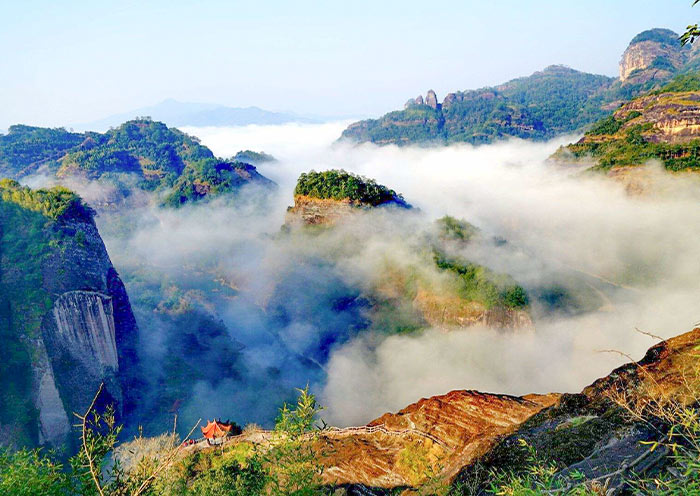

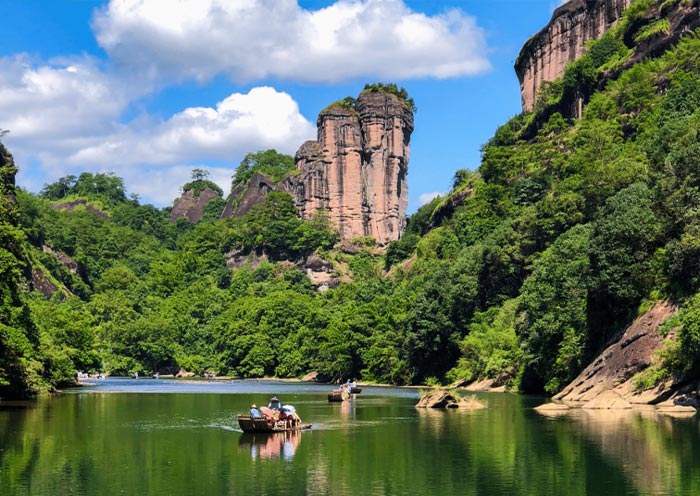
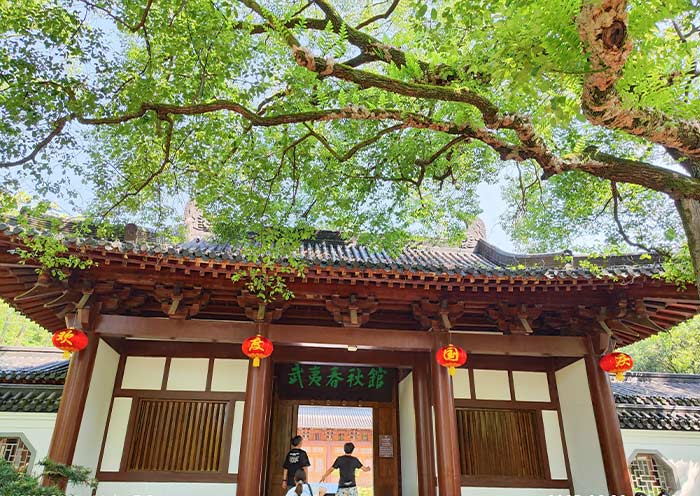
On this day, embark on an in-depth exploration of tea culture and immerse yourself in the richness of Wuyishan tea! Renowned for its exceptional quality and distinct flavor profiles, Wuyishan tea is a true treasure waiting to be discovered. The rocky terrain, unique climate, and abundant biodiversity of Wuyishan create the perfect conditions for cultivating these extraordinary tea leaves. Experience the most well-known varieties of Wuyishan tea, including the legendary Da Hong Pao (Big Red Robe), the aromatic Shui Xian (Narcissus), the spicy Rou Gui (Cinnamon), and the revered Tie Guan Yin (Iron Goddess of Mercy). Each tea possesses its own character, offering a delightful sensory experience that captivates the palate.
After breakfast, you will board a sightseeing bus to the Da Hong Pao Scenic Area (大红袍景区) to begin your exploration. Start by visiting Tianxin Yongle Zen Temple (天心永乐禅寺), which boasts a history of over 1,200 years, and delve into the stories surrounding the renowned tea called "Da Hong Pao." Legend has it that in ancient times, a scholar fell ill while traveling through Wuyi Mountain on his way to the capital. The locals offered him water infused with the "divine tea" from Tianxin Yongle Zen Temple, and miraculously, he made a full recovery. Later, having achieved the top scholar position in the imperial examination, he returned to Wuyi Mountain and draped his scholar's robe over the tea tree, forever naming it "Da Hong Pao" (Big Red Robe).
After your temple visit, take a leisurely stroll through the Da Hong Pao tea plantation and admire the 350-year-old mother tree of Da Hong Pao (大红袍母树). Located within the Jiulongke Scenic Area, you will find six tea trees representing four different varieties. Each tree possesses unique leaf shapes and sprouting times, showcasing the diversity of these cultivars. Next, proceed to Water Curve Cave (Shuilian Cave, 水帘洞), the largest rock cave in Wuyi Mountain, situated on the eastern side of the Danxia Range. As you enter, you will be greeted by a slender waterfall cascading down from the top of Xiabin Rock, known as Xiaoshuilian Cave. Continue your journey by climbing the steps, leading you to Shuilian Cave itself. Nestled amidst the cliffs, the cave is adorned with inscriptions and engravings. Notably, you will find seal script characters featuring a famous quatrain by Zhu Xi: "Ask the source how it remains so clear, it's because of the flowing water from the origin" (问渠那得清如许,为有源头活水来). If you have enough time, prepare to be enchanted by the intricate flavors and aromas that unfold with every sip. Take a moment to sit down and relax, allowing yourself to truly savor the authentic flavors of Wuyishan tea.
In this afternoon, be escorted to Xiamei Village, about 8 km in the east of Mount Wuyi. Known as the "Ten Thousand Miles Tea Road," it has not only nurtured famous poets like Liu Yong from the Northern Song Dynasty and Neo-Confucian philosopher Zhu Xi from the Southern Song Dynasty but also cultivated the prosperous tea market of Xiaomei during the Qing Dynasty. In spring, every household is busy picking and processing tea, and the air is filled with the fragrance of tea. Fujian and Shanxi merchants joined forces to open another "Ten Thousand Miles Tea Road" in Xiaomei Village, making it the largest tea trading center in the Wuyi Mountain area. Within the village, there are more than 30 well-preserved ancient dwellings from the Qing Dynasty. Among them, the "Three Carvings" (brick carving, stone carving, wood carving) of the ancient dwellings are particularly prominent and are the highlights of the ancient dwellings in Xiaomei. The most representative ancient dwellings include the Zou Family Doctor's Residence, Zou Family Ancestral Hall, and Dali Lane.
After the tour, it is time to leave Wuyishan and be transferred to railway station or airport for your high-speed train/flight to the next destination. Thank you for choosing Asia Odyssey Travel (AOT) for your Fujian tour. We are always dedicated to serving you and look forward to welcoming you again for your future trips to China/Asia.
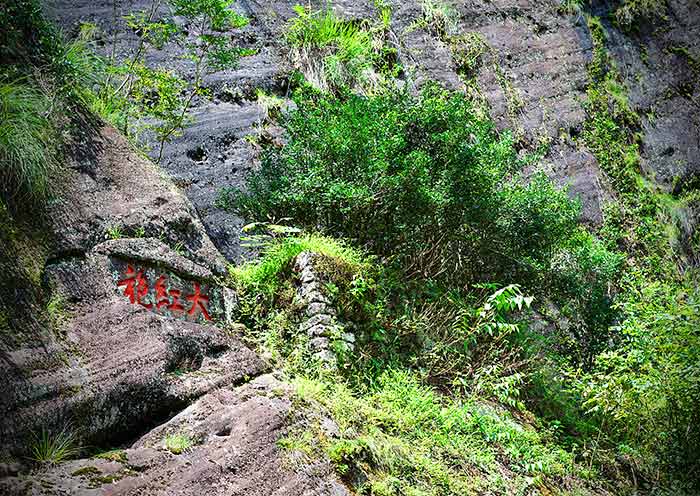
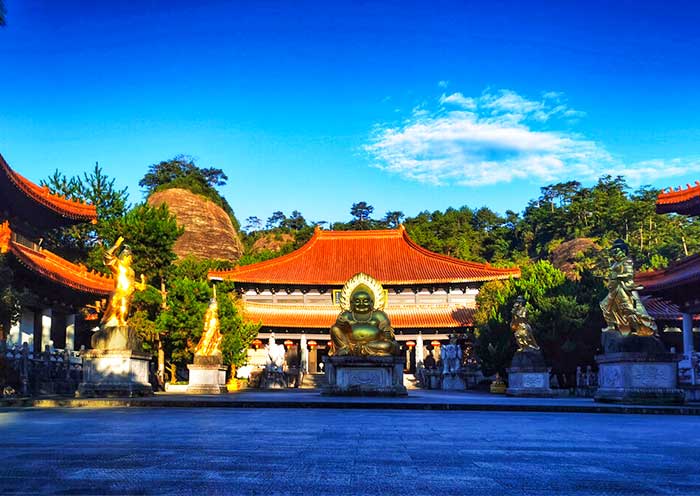
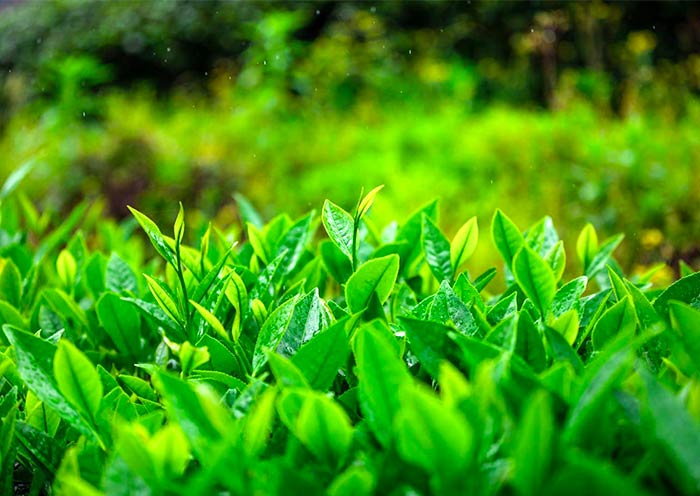
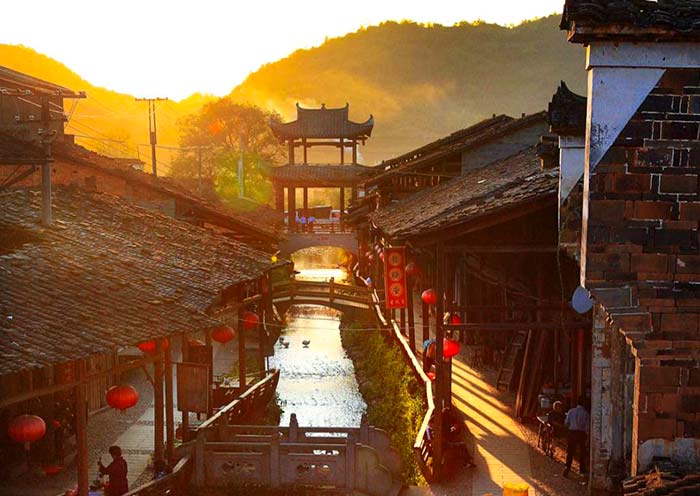
Price: What’s Included & What’s Excluded
What’s Included?
What’s Excluded?
Important Trip Notes for Booking a Private China Tour
Accommodation & Hotel Condition for Your China Tour
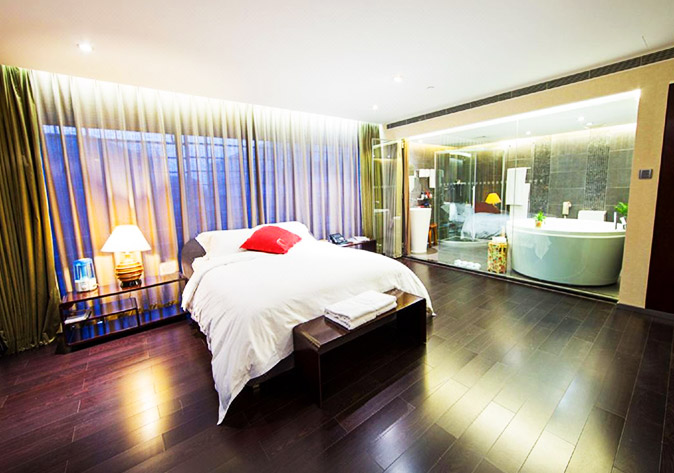

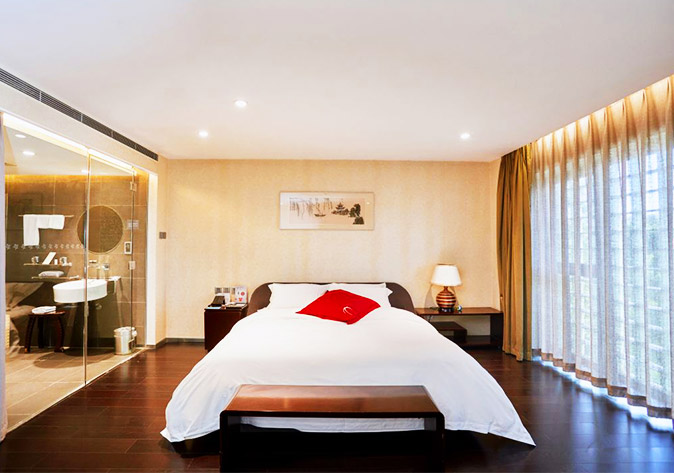
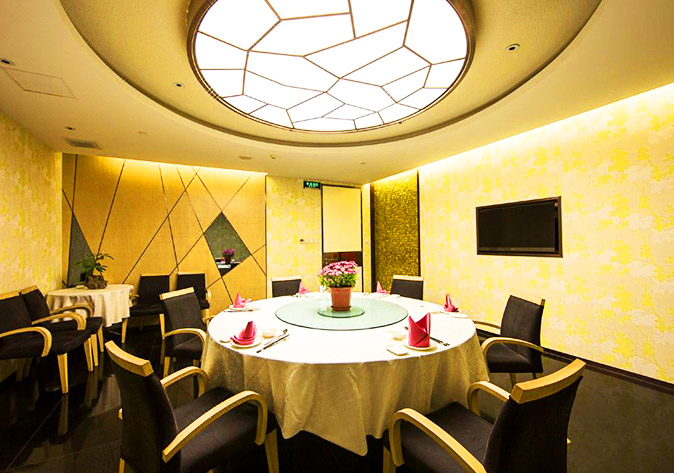
Photo Gallery for This Itinerary
Latest Fujian Tours Reviews from Our Customers

Aisha
Malaysia
Destination(s): Ningxia
Date of Experience: Sep 02, 2025
Tour Customized by: Nicole
You May be Interested in This Tour: 5 Days Classic Ningxia Tour - Shapotou Desert, Yellow River & Lost Kingdoms

Emily Johnson
USA
Expert guides and seamless logistics made our trip truly exceptional. Highly recommended! The Tengger Desert's colorful lakes were a surreal highlight after an unforgettable night camping under Shapotou's starry sky. The history, wine, and off-roading created a perfect, diverse adventure.
Destination(s): Ningxia
Date of Experience: Oct 09, 2025
Tour Customized by: Anthony
You May be Interested in This Tour: 6 Days Ningxia Odyssey Tour: Desert Camping & Off-road to Colorful Lakes

Ryan Tan
Singapore
The perfect mix of history, wine tasting, and desert adventures, especially camping in Shapotou under the stars. Highlights included the stunning Western Xia Tombs and Xige Winery. Truly unique and well-organized—highly recommended!
Destination(s): Ningxia
Date of Experience: Jun 12, 2025
Tour Customized by: Danny
You May be Interested in This Tour: 6 Days Ningxia Wine Tour with Desert Camping in Shapotou
Price: Request
(Based on a private tour for two people. Price varies depending on program, travel date, number of people.)
Free Enquiry! You don’t need to pay for the reservation.
- United States (+1)
- Australia (+61)
- Singapore (+65)
- Malaysia (+60)
- Philippines (+63)
- Canada (+1)
- Italy (+39)
- Indonesia (+62)
- United Kingdom (+44)
- Spain (+34)
- Mexico (+52)
- Hong Kong (+852)
- Thailand (+66)
- United Arab Emirates (+971)
- New Zealand (+64)
- South Africa (+27)
- Germany (+49)
- Brazil (+55)
- India (+91)
- France (+33)
- Vietnam (+84)
- The Netherlands (+31)
- Saudi Arabia (+966)
- Ireland (+353)
- Argentina (+54)
- Switzerland (+41)
- Romania (+40)
- Pakistan (+92)
- Japan (+81)
- Portugal (+351)
- Bangladesh (+880)
- South Korea (+82)
- Puerto Rico (+1)
- Türkiye (+90)
- China (+86)
- Belgium (+32)
- Qatar (+974)
- Greece (+30)
- Taiwan (+886)
- Austria (+43)
- Poland (+48)
- Israel (+972)
- Chile (+56)
- Sri Lanka (+94)
- Nigeria (+234)
- Peru (+51)
- Colombia (+57)
- Hungary (+36)
- Nepal (+977)
- Denmark (+45)
- Bulgaria (+359)
- Norway (+47)
- Slovenia (+383)
- Sweden (+46)
- Kuwait (+965)
- Costa Rica (+506)
- Ecuador (+593)
- Venezuela (+58)
- Malta (+356)
- Croatia (+385)
- Tunisia (+216)
- Czechia (+420)
- Mongolia (+976)
- Bahrain (+973)
- Mauritius (+230)
- Papua New Guinea (+675)
- Cambodia (+855)
- Dominican Republic (+1)
- Luxembourg (+352)
- Finland (+358)
- Guatemala (+502)
- Myanmar (+95)
- Maldives (+960)
- Slovakia (+421)
- Laos (+856)
- Serbia (+381)
- Brunei (+673)
- Oman (+968)
- Macao (+853)
- Panama (+507)
- Morocco (+212)
- Jordan (+962)
- Georgia (+995)
- Fiji (+679)
- Bolivia (+591)
- Lithuania (+370)
- Bahamas (+1)
- Cyprus (+357)
- Latvia (+371)
- Bhutan (+975)
- Iraq (+964)
- Iran (+98)
- Kenya (+254)
- Jamaica (+1)
- Zimbabwe (+263)
- Azerbaijan (+994)
- Uruguay (+598)
- Estonia (+372)
- Andorra (+376)
- Cameroon (+237)
- Ghana (+233)
- Kazakhstan (+7)
- Nicaragua (+505)
- Egypt (+20)
- Russia (+7)
- Albania (+355)
- Réunion (+262)
- Montenegro (+382)
- Algeria (+213)
- Afghanistan (+93)
- Martinique (+596)
- Uganda (+256)
- Honduras (+504)
- North Macedonia (+389)
- Trinidad and Tobago (+1)
- Suriname (+597)
- Antigua and Barbuda (+1)
- Zambia (+260)
- Ukraine (+380)
- Armenia (+374)
- Barbados (+1)
- Belarus (+375)
- Palestine (+970)
- Lesotho (+266)
- Moldova (+373)
- Ethiopia (+251)
- French Polynesia (+689)
- Gambia (+220)
- Guam (+1)
- Gibraltar (+350)
- Isle of Man (+44)
- New Caledonia (+687)
- El Salvador (+503)
- Comoros (+269)
- Seychelles (+248)
- Chad (+235)
- Samoa (+685)
- Cook Islands (+682)
- Palau (+680)
- Paraguay (+595)
- DR Congo (+243)
- Solomon Islands (+677)

